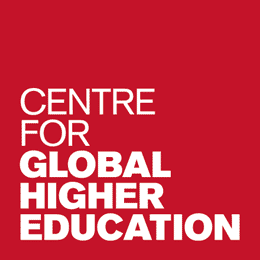Intersectoral relationships within higher education: the FE/HE interface in the UK
Event Materials
This event is now archived and we are pleased to provide the following event media and assets, along with the original event overview.
The position of post-secondary education can be an issue of policy tension in many national systems, whether they operate as separate sectors with their own policy agendas or are brought together in one collaborative sector. The UK has a tertiary sector composed of Further Education (FE) and Higher (HE) education systems, FE colleges offer courses for 16 year olds and above and for technological and professional qualifications, but as a sector have taken very much a second place to higher education both in funding and in status. FE HE relationship is not unlike the community college/ university distinction in North America, although FE colleges feeder role into higher education is not so clearly recognised.
We found that the main sources of official data did not include material which enabled judgements to be made as to the interface that existed between FE and HE. Our research, therefore, was to establish the nature of the interface and the extent to which it contributed, if at all, to the policy environment of both sectors. Our research involved distributing questionnaires to over 300 colleges throughout the UK in 2020 to establish the nature of the formal relationship between FE and HE institutions, specifically in terms of exclusive and multiple student progression arrangements; franchised teaching; validated courses; and apprenticeship programmes.
A total of 130 colleges responded, drawn from all regions and countries in the UK and representing about 44 per cent of the active FE colleges. The results indicated about 90 per cent had some formal arrangement with HEIs. Few had exclusive progression arrangements with a single HEI, many more multiple arrangements; this is also the case for franchised and validated courses: colleges prefer not to tie themselves to a single institution both for market reasons and because it offers more choice to their students. The spread of the taught activities strongly supports the largely vocational character of the sector: STEM subjects comprise over a third of the activities; if other vocational subjects are included such as Business and Administrative Studies and Education (teacher training), the figure for vocational courses rises to 65 per cent.
Generally, our findings demonstrate a breadth and depth of interface between colleges and universities which may not be recognised at a national policy level. The data and the economic and geophysical context of Wales and Scotland (and probably Northern Ireland) strongly support moves to tertiary education systems where policies towards higher and further education are closely integrated and where institutions, working in collaboration, can make significant social and economic impacts. The position is less clear cut in England because of the diversity of the economic and geophysical profiles of the different regions. Nevertheless our data which shows a considerable inter penetration of the two sectors suggests that steps should be taken to remove compartmentalism in policymaking and that individual regions in England should, if appropriate and as their powers permit, be encouraged to move in a tertiary direction.
Event Materials
This event is now archived and we are pleased to provide the following event media and assets, along with the original event overview.
